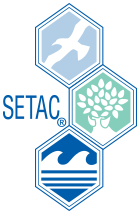Fundão Dam Rupture Environmental Science Meeting
The collapse in 2015 of the Fundão Tailings Dam at the Samarco iron ore mine in Brazil devasted the Rio Doce catchment. The accident is among the world’s largest tailing dam disasters, releasing ca. 33 million cubic meters of primarily clay and fine sand-sized material that traversed over 600 km from the municipality of Mariana, Minas Gerais, to the Atlantic Ocean. The mass flow of tailings and entrained materials affected terrestrial and aquatic ecosystems and compromised socio-economic activities in 41 municipalities. Environmental monitoring and rehabilitation work continues to present day.
Beginning soon after the accident numerous aquatic and terrestrial monitoring programs, research investigations and emergency recovery works were initiated in the catchment to understand the consequences of the accident and prospects for full recovery of the Rio Doce river basin. Many thousands of biota, sediment, soil and water samples have been collected for physical, chemical, biological and ecotoxicological assessments. Aquatic and terrestrial restoration work is well underway at many locations. In June 2019, Society of Environmental Toxicology and Chemistry (SETAC) Latin America (SETAC-LA) hosted in Brasilia, Brazil, the first science meeting devoted to sharing scientific information on the environmental consequences and rehabilitation challenges. Experts reported on results from their work, resulting in the publication of technical papers in the international SETAC journal, Integrated Environmental Assessment and Management (IEAM 16:5).
Now, over 6 years after the accident, SETAC-LA will host a second scientific meeting devoted to further understanding the consequences of the Fundão Tailings Dam failure and progress towards recovery of the Rio Doce catchment.
The symposium dates have been changed to 21&22 September 2022 in Ouro Preto, MG, Brazil. The meeting has two objectives:
- Promote the dissemination of scientific information describing the results of monitoring studies and environmental recovery work in the Rio Doce catchment; and,
- Share lessons learned from other locations around the world where similar large-scale accidents have occurred.
SETAC-LA and IEAM would like to build on the success and knowledge presented in the first issue by inviting symposium attendees to contribute to a follow-up series.
Organizing Committee
Dr. Adalberto Luis Val/Pesquisador, INPA
Dr. Denis Moledo de Souza Abessa – UNESP
Dra. Laila Medeiros – Fundação Renova
Dr. Pedro Val – UFOP
Dr. Rafael Almeida Magris – ICMBio
Dr. Ross Smith – Hydrobiology/Past-President, SETAC World Council
Dra. Susana Loureiro – Universidade dos Açores – Portugal
Dra. Tatiana Furley – Aplysia/ Chair of SETAC Latin America Science Committee
Sra. Thammy Barreto – T&M Eventos


